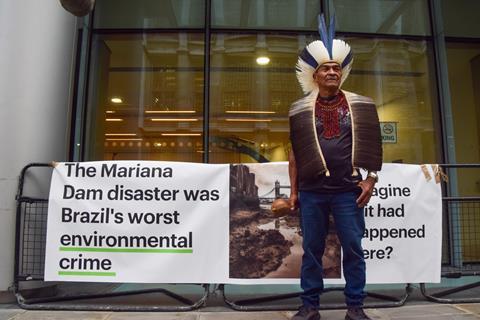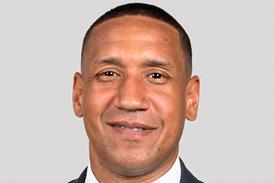In Município de Mariana and others v BHP Group (UK) Ltd and BHP Group Ltd, Mrs Justice O’Farrell found the collapse of the Fundão Dam, operated by Samarco, a joint venture between BHP and Brazilian company Vale, was ‘foreseeable’.
In her 222-page judgment, the judge said: ‘Against the obvious signs of contractive, saturated tailings and numerous incidents of seepage and cracking, it was imprudent to continue to raise the dam…in the absence of proper written analysis of the stability of the setback [realigning the dam by moving the dam crest back so that embankment raising could continue] and the attendant risks.’
‘A stability analysis’ would have meant it was ‘inconceivable that a decision would have been taken to continue raising the height of the dam in those circumstances and the collapse could have been averted’, she added.
The collapse of the dam caused ‘extensive environmental and socio-economic damage’ and ‘caused widespread devastation to the surrounding communities, waterways, land and infrastructure’, the judgment said. BHP denied all allegations against it.

Read more
But the judge found BHP to be ‘strictly liable as “polluters” in respect of damage caused by the collapse’ under the Brazilian Environmental Law and is also ‘liable based on fault in respect of damage caused by the collapse, pursuant to Article 186 of the Civil Code’. She found that BHP was not liable in respect of the damage caused by the collapse under Articles 116 and/or 117 of the Corporate Law in Brazil and was not in breach of its duties and responsibilities as a controlling shareholder under the same articles.
The judgment said: ‘The relevant activity in this case was the activity of mining and the storage of iron ore tailings in the Fundão Dam. It is not disputed by BHP that this activity caused environmental degradation and damage such that it is a polluting activity under the Environmental Law.’
Referring to the structure of Samarco, which operated the dam, the judgment said it was ‘evident’ that Samarco’s governance structure ‘enabled BHP and Vale to exercise effective power and control over Samarco’.
The judgment found the structure of the joint venture ‘ensured that the Samarco board was made up entirely of BHP and Vale representatives’ and ‘by design, the executive board was subservient to the will of the Samarco board’.
‘As BHP and Vale were 50/50 shareholders, decisions of the Samarco Board could only be made by their joint agreement. It followed that Samarco’s corporate governance structure guaranteed the ability of BHP and Vale jointly to control Samarco.
‘BHP (together with Vale) was directly and/or indirectly responsible for the activity of Samarco in owning and operating the Fundão tailings dam’.
The judge also found the municipalities were not barred by prescription or limitation and there was ‘no constitutional impediment by way of incapacity…to bring proceedings’ in the English jurisidiction.
A number of claimants have recieved compensation through schemes and processes supervised and/or mandated by the Brazilian courts as well as individual settlement agreements. Some of the sample settlement agreements before the judge were found to be 'adhesion contracts' and ‘any ambiguity or conflict must be resolved in the claimant’s favour'.
BHP has already announced its intention to appeal the decision. A second phase of the trial, to deal with damages, is scheduled for October 2026.






























No comments yet